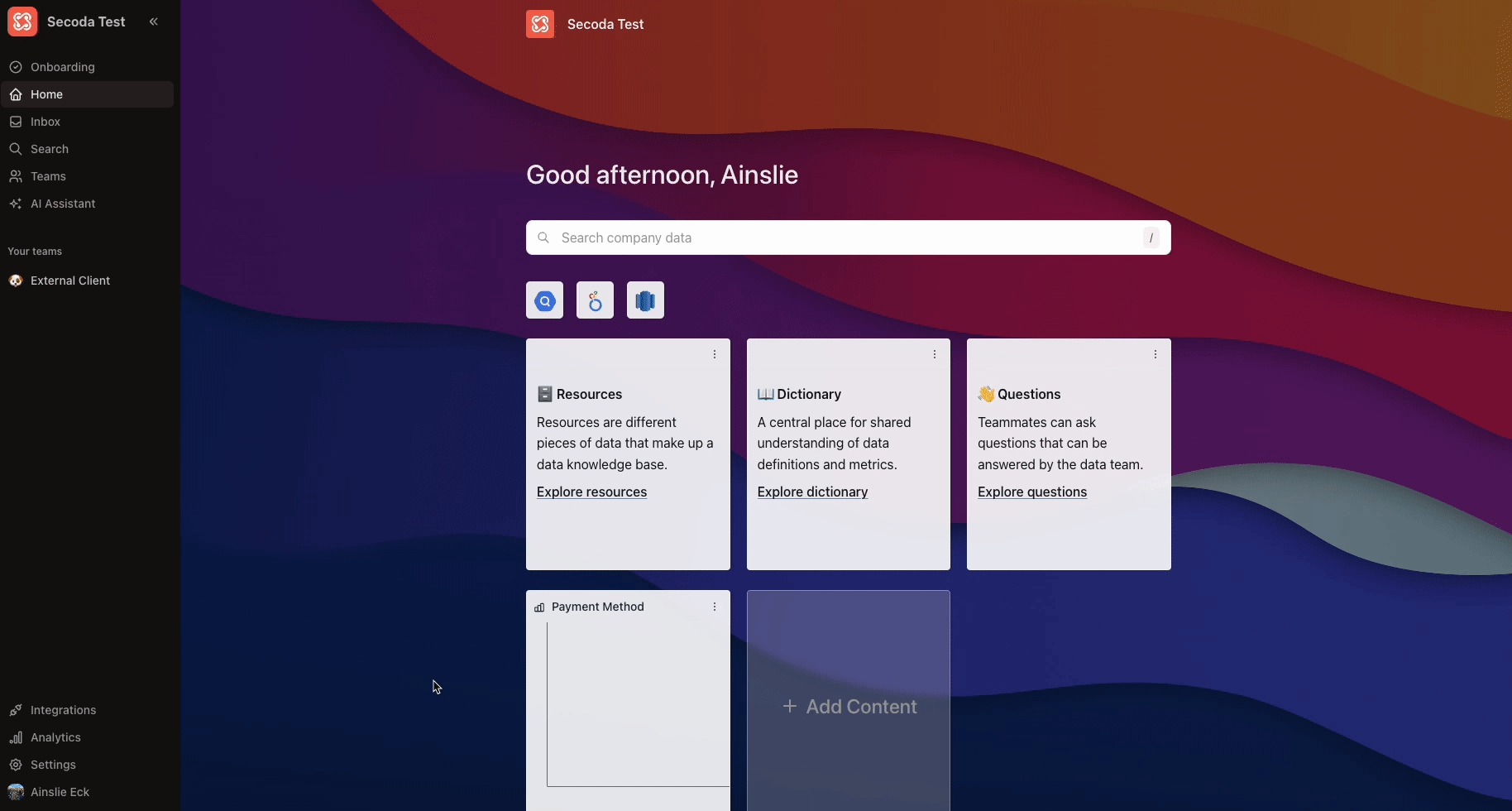Connect your data
Start documenting and making your data discoverable for your team by connecting your data resources to Secoda.
Benefits to connecting your data to Secoda
Improved data lineage: By connecting your data to Secoda, you can automate the process of tracking and documenting data lineage. This can help you understand where your data comes from, how it has been transformed, and how it is used within your organization.
Enhanced data documentation: Connecting your data to Secoda allows you to automatically generate documentation for your data assets, including descriptions, definitions, and metadata. This can help improve the transparency and understandability of your data, making it easier for others to use and trust.
Improved data discovery: By connecting your data to Secoda, you can make it easier for others to discover and access your data assets. This can help improve collaboration and ensure that team members have the information they need to make informed decisions.
Enhanced data governance: Connecting your data to Secoda allows you to establish clear roles and responsibilities for data management and ensure that all team members follow established data governance policies and procedures.
How does Secoda integrate into your data?
Secoda integrates with your databases, data warehouses and BI tools to fetch metadata, query history and activity from data sources to make it easier to share and document data knowledge with stakeholders.
As soon as the metadata and query history have been added to Secoda, they are compiled into a unified metadata store by way of a query parser. By parsing queries, we look at what data is there, where it is, and how it is used.
If queries are available, the tables, databases and dashboards will display a data column and table level lineage model, to easily see from one place what the data dependencies are, where the data came from, and where it's being used.
How to add integrations
Adding integrations is simple.
Navigate over to the Integrations tab on the side panel and click New Integration. Note: only Workspace Admins have access to this tab.
Choose which type of integration you'd like to connect from our long list of products that we support
See the documentation on the right panel (or here Integrations) for specific instructions on setting up.
Under "Associated Teams", click which Teams you'd like to have access to all of the metadata in that integration.
See the Metadata seamlessly flow into your Catalog.

Current integrations
See all of our integrations below.
IntegrationsLast updated
Was this helpful?